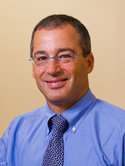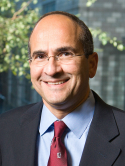| Abstract: |
Traditional breast conservation therapy consists of lumpectomy and whole-breast irradiation. Local recurrence after breast conservation is usually managed with salvage mastectomy. Skin-sparing mastectomy and immediate autologous tissue reconstruction is an accepted method of managing primary breast malignancies with exceptional aesthetic results. The purpose of this study was to evaluate this technique in the previously irradiated breast. This study is a retrospective review of all patients un ui-idergoing skin-sparing mastectomy and immediate reconstruction with autologous tissue after failed breast conservation therapy between 1995 and 1999. There were 11 patients with a mean age of 45 years (range, 34 to 58 years). Initial lumpectomy was performed for ductal carcinoma in situ in six patients and infiltrating carcinoma (ductal or lobular) in five patients. The interval from lumpectomy to salvage mastectomy ranged from 12 to 169 months (mean, 44 months). Reconstructive techniques included unipedicled transverse rectus abdominis musculocutaneous (TRAM) flap (n = 4), free TRAM flap (n = 4), and latissimus flap with immediate placement of a saline implant (n = 3). Flap survival was 100 percent, and there were no early flap complications. One patient developed partial-thickness mastectomy flap loss (3 × 3 cm), which was managed conservatively. There were no instances of full-thickness mastectomy skin loss. Late complications included capsular contracture (n = 2), fat necrosis (n = 1), and ventral hernia (n = 1). There was one late death from metastatic disease; the remaining patients were without evidence of disease at a mean of 48 months (range, 30 to 75 months). Aesthetic results were judged as excellent (n = 4), good (n = 5), fair (n = 1), and poor (n = 1). These results demonstrate that skin-sparing mastectomy and immediate autologous tissue reconstruction can be safely performed in patients with previous whole-breast irradiation. Clearly, patient selection is paramount with attention to the quality of the irradiated breast skin and the anatomic location of the recurrent disease. In this experience, the best results were seen after TRAM (pedicled or free) flap reconstruction. |






